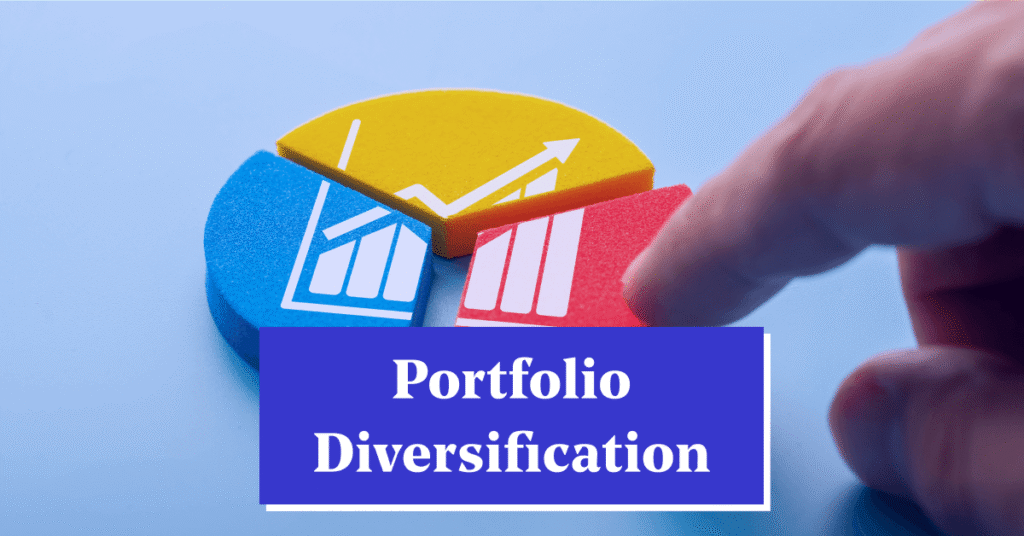What Is A Diversified Investment Portfolio And Why Should You Build One?
In the world of investing, one of the most important principles that every investor should understand and implement is diversification. Whether you’re just starting out or have been investing for years, the concept of a diversified investment portfolio is crucial to long-term success and managing risk effectively. But what exactly is a diversified investment portfolio, and why is it so important?
In this article, we will dive deep into the concept of a diversified investment portfolio, explore the various types of assets that should be included, and discuss the numerous benefits of diversification. We will also address some common questions related to diversification to give you a well-rounded understanding of this vital investment strategy.
Key Takeaways:
- Diversification reduces risk by spreading investments across different asset classes and sectors.
- Asset classes like stocks, bonds, real estate, and commodities should be part of a diversified portfolio.
- A diversified portfolio provides greater flexibility and helps to manage market volatility.
- Regularly review and rebalance your portfolio to keep it aligned with your financial goals and risk tolerance.
What is a Diversified Investment Portfolio?

A diversified investment portfolio is an investment strategy that involves spreading your investments across various asset classes, industries, geographic regions, and investment instruments to reduce exposure to any single risk. The idea behind diversification is simple: if one investment loses value, others may still perform well, helping to stabilize your overall portfolio performance.
Instead of putting all of your money into one asset, such as stocks from a single company or a single industry, diversification spreads your investment risk across a wide array of assets. This approach helps to protect against the volatility of individual investments and minimizes the overall risk of financial loss. By having a range of different assets, the ups and downs of one investment may be offset by the gains or stability of another, ensuring that your portfolio is not overly reliant on any one source of risk.
A diversified investment portfolio generally includes a mix of different types of assets, such as:
- Stocks: Ownership shares in companies.
- Bonds: Debt securities issued by governments or corporations.
- Real Estate: Property investments that generate rental income or appreciate over time.
- Commodities: Tangible assets like gold, silver, oil, or agricultural products.
- Mutual Funds and ETFs (Exchange-Traded Funds): Investment funds that pool money from many investors to invest in a diversified mix of assets.
- Cryptocurrency: Digital or virtual currencies like Bitcoin, Ethereum, etc.
- Cash and Cash Equivalents: Money market funds, certificates of deposit (CDs), and other short-term, low-risk investments.
Why Should You Build a Diversified Investment Portfolio?
Building a diversified portfolio is essential for a variety of reasons, including risk management, growth potential, and financial stability. Here are some key reasons why diversification is crucial to your investment strategy:
1. Reduces Risk
The primary reason for diversification is to reduce risk. Every asset carries its own risk, and some investments are riskier than others. By spreading your money across a variety of assets, you ensure that if one part of your portfolio underperforms, other assets may perform better, thereby reducing your overall exposure to market volatility. For example, the stock market may be down, but bonds or real estate investments could still generate returns, keeping your portfolio balanced.
2. Enhances Potential Returns
While diversification is often seen as a way to minimize risk, it can also enhance the potential for returns. By investing in different asset classes, you increase the chances of achieving higher returns in areas that might be underperforming in the broader market. For instance, when the stock market isn’t performing well, other assets, such as commodities or international equities, might be on an upward trajectory, which could boost your overall portfolio returns.
3. Mitigates the Impact of Market Volatility
No market or investment is immune to volatility. Stock markets, for example, can experience rapid and dramatic fluctuations due to factors like economic changes, geopolitical events, or corporate earnings reports. By diversifying your portfolio, you ensure that the effects of market downturns or volatility in any one sector are buffered. If one asset class declines, your other assets may remain stable or even appreciate, balancing out your overall portfolio’s performance.
4. Provides Greater Flexibility and Flexibility
A diversified portfolio offers greater flexibility in terms of your investment choices. It allows you to shift between asset classes based on your risk tolerance, financial goals, and market conditions. For instance, if interest rates rise, you might want to reduce your exposure to bonds and increase your investment in real estate or stocks. A diversified portfolio enables you to make these adjustments as needed without taking on excessive risk.
5. Helps Meet Long-Term Financial Goals
Building wealth typically requires patience and long-term planning. A diversified portfolio aligns well with a long-term investment strategy by smoothing out the highs and lows of the market. It allows you to grow your investments over time while managing risk. For instance, equities might provide higher returns over the long run, but including bonds or real estate in your portfolio helps reduce the overall risk, giving you a balanced approach to meeting your financial goals.
6. Offers Protection During Economic Downturns
Diversification also provides some protection during economic downturns. In times of recession or financial crisis, some industries and assets, such as government bonds, may perform well while others may decline. A well-diversified portfolio can cushion the blow during such challenging times, preventing substantial losses in your investments.
Types of Diversification
To fully understand how diversification works, it’s important to recognize the various forms it can take. The three main types of diversification are:
1. Asset Class Diversification
This involves spreading investments across different asset classes, such as stocks, bonds, real estate, and cash. Each asset class behaves differently under various economic conditions, and their performance can vary depending on market cycles. By having a mix of asset classes, you can achieve a more balanced and stable portfolio.
2. Sector Diversification
This form of diversification involves investing in different sectors of the economy. For example, you might invest in technology, healthcare, finance, consumer goods, and energy. Different sectors perform better during different economic cycles. For instance, technology stocks may thrive during periods of economic growth, while utilities and consumer staples may perform better during economic downturns.
3. Geographic Diversification
Geographic diversification spreads investments across different regions or countries. This helps reduce the risk that comes with focusing on a single nation or economy. For example, if the U.S. economy is struggling, international investments could perform well, balancing out your portfolio. Many investors diversify globally by investing in emerging markets, developed economies, or specific regions like Asia or Europe.
Advanced Strategies for Diversification

While basic diversification through a mix of asset classes, sectors, and regions is a strong foundation, advanced strategies can help you fine-tune your portfolio to achieve even better risk-adjusted returns. Here are a few sophisticated approaches you might want to consider.
1. Factor-Based Diversification
Factor-based diversification refers to investing in assets based on specific investment factors rather than just asset types. These factors can include:
- Value: Investing in stocks or other assets that are undervalued compared to their fundamentals.
- Growth: Investing in assets or companies with strong potential for growth, even if they are overvalued in the short term.
- Momentum: Focusing on assets that have shown strong recent performance.
- Low Volatility: Allocating investments to assets with low price fluctuations.
This strategy aims to target certain drivers of returns, balancing them across different parts of your portfolio to enhance its overall performance and resilience.
2. Tactical Asset Allocation
Unlike the static nature of traditional asset allocation, tactical asset allocation (TAA) involves making short- to medium-term adjustments to your portfolio in response to market conditions. This could mean increasing your exposure to stocks when the market is strong or shifting to bonds or cash equivalents when the market shows signs of instability.
TAA requires careful monitoring of market trends and economic data. While it has the potential for higher returns, it also carries more risk as it involves predicting market movements, which is not always reliable.
3. Alternative Investments for Diversification
For investors looking for ways to diversify beyond traditional stocks and bonds, alternative investments offer exciting opportunities. These include:
- Private Equity: Investing in private companies not listed on public stock exchanges. This can be an attractive option for diversifying outside of the stock market.
- Hedge Funds: These funds typically employ strategies like short selling, leverage, and derivatives to generate returns, making them less correlated with traditional assets.
- Commodities: Including precious metals (gold, silver), energy (oil, natural gas), and agricultural products in your portfolio can hedge against inflation and serve as a safe haven during economic downturns.
- Cryptocurrencies: While still relatively new, investing in digital assets like Bitcoin or Ethereum can provide exposure to a growing asset class that is largely independent of traditional markets.
These alternative investments can increase diversification, but they often come with higher risks and less liquidity compared to traditional assets.
4. International Diversification
Many investors limit their exposure to local markets, but international diversification offers significant opportunities for growth. This can include investing in emerging markets, developed markets, or region-specific funds such as those focused on Asia, Europe, or Latin America.
International investments can help reduce risk by protecting your portfolio from issues affecting one country or region. Additionally, emerging markets often present higher growth potential, although they come with more volatility. For example, China and India have growing middle-class populations, driving demand for a variety of goods and services, potentially boosting investment returns.
How to Build a Diversified Investment Portfolio: Step-by-Step Guide
Building a diversified portfolio involves a thoughtful approach, where you’ll need to consider your financial goals, risk tolerance, and investment horizon. Here’s a step-by-step guide to help you get started:
Step 1: Define Your Investment Goals and Time Horizon
Before you start investing, clearly outline your goals. Are you investing for retirement? For your children’s education? For wealth-building? Understanding your goals will shape your asset allocation decisions.
- Short-Term Goals: If you plan to access the money in a few years, consider more conservative investments like bonds or certificates of deposit (CDs).
- Long-Term Goals: For retirement or other long-term goals, you can afford to take more risks, so you might lean more heavily into stocks or equities.
Step 2: Assess Your Risk Tolerance
Risk tolerance refers to the amount of risk you are willing to take on in your investments. Generally, the more risk you’re willing to accept, the higher the potential reward, but also the higher the potential loss.
- Conservative: Typically, a more conservative investor might focus on bonds, dividend-paying stocks, and cash equivalents.
- Moderate: A moderate investor might invest in a balanced mix of stocks and bonds.
- Aggressive: An aggressive investor may allocate a larger portion to stocks, including growth stocks and emerging markets, and may also explore alternative investments.
Step 3: Choose Your Asset Allocation
Once you’ve defined your goals and assessed your risk tolerance, you can now determine how to allocate your investments across different asset classes. Here are some general guidelines for different risk profiles:
- Conservative Portfolio: 20-40% stocks, 60-80% bonds and cash.
- Balanced Portfolio: 40-60% stocks, 40-60% bonds and other fixed-income assets.
- Aggressive Portfolio: 70-90% stocks, 10-30% bonds, with potential allocations to alternative assets.
Step 4: Diversify Within Each Asset Class
Don’t just rely on a broad mix of stocks and bonds. You also want to diversify within those categories. For example, within your stock allocation, you might invest in:
- Domestic and international stocks
- Small-cap and large-cap stocks
- Growth and value stocks
Similarly, within bonds, diversify across corporate bonds, municipal bonds, and government bonds with different maturities and ratings.
Step 5: Implement a Regular Rebalancing Schedule
Over time, your portfolio’s asset allocation may drift due to market fluctuations. For instance, if stocks outperform and bonds underperform, your stock allocation might rise beyond your desired target. To maintain your desired risk level and asset mix, you should rebalance your portfolio regularly—at least once a year or whenever there is a significant shift in your financial situation.
Rebalancing involves selling overperforming assets and buying underperforming ones to bring your portfolio back to the desired allocation.
Managing Risk with a Diversified Portfolio

While diversification can significantly reduce risk, it’s important to remember that no investment strategy is entirely risk-free. Even a well-diversified portfolio can experience losses, particularly during market downturns. Here’s how you can further mitigate risk:
1. Understand the Risks of Diversification
Diversification doesn’t eliminate risk; it reduces it. Risks like systematic risk (market risk) and unsystematic risk (company or sector-specific risk) can still affect your portfolio, though to a lesser extent with diversification. Therefore, regular monitoring is important to stay on top of how various parts of your portfolio are performing.
2. Stay Educated and Be Prepared for Market Cycles
The market goes through cycles of boom and bust. While diversification can buffer against certain downturns, it’s important to remain aware of broader market trends. Being educated about market conditions and preparing your portfolio for different scenarios can improve your ability to adapt to changing environments.
3. Invest in Quality Assets
While diversification is important, the quality of the assets you invest in is just as critical. Even within a diversified portfolio, poor-quality investments can drag down performance. Always consider the fundamentals of the assets you choose, and focus on high-quality investments with solid growth potential.
Final Thoughts: Building a Strong Financial Foundation
A diversified investment portfolio is essential for managing risk, achieving long-term financial goals, and navigating the inherent uncertainty of financial markets. By spreading investments across a range of asset classes, sectors, and geographic regions, you can better position yourself to weather market volatility while still participating in growth opportunities.
Diversification is not just a passive strategy—it’s a dynamic, ongoing process that requires regular review, adjustment, and a proactive approach. As your financial situation and goals evolve, so too should your portfolio.
Also Read :-What Are Alternative Investments And How Can They Diversify Your Portfolio?
Conclusion
Building a diversified investment portfolio is one of the most effective strategies to mitigate risk and increase your chances of achieving long-term financial success. Diversification involves spreading your investments across different asset classes, sectors, and geographic regions to protect your portfolio from market volatility and ensure that no single investment is overly reliant on your success. By reducing risk and enhancing the potential for returns, a diversified portfolio offers greater flexibility and stability in the face of market fluctuations.
7 FAQs About Diversified Investment Portfolios
1. What is the ideal mix of investments in a diversified portfolio?
The ideal mix of investments depends on your individual financial goals, risk tolerance, and investment horizon. Typically, younger investors with a longer time horizon may allocate more to stocks for growth, while older investors nearing retirement may prioritize bonds and income-generating assets. A financial advisor can help tailor an appropriate mix for your needs.
2. How do I diversify my portfolio if I have a small amount of money to invest?
If you have a small amount of money to invest, you can still diversify by investing in low-cost options like ETFs or mutual funds, which pool money from multiple investors to buy a variety of stocks, bonds, and other assets. This allows you to own a portion of a diverse portfolio without needing large amounts of capital.
3. Is diversification the same as asset allocation?
While both terms are related, they are not the same. Asset allocation refers to the process of determining the percentage of your portfolio to allocate to each asset class (stocks, bonds, real estate, etc.). Diversification, on the other hand, involves spreading your investments within each asset class (such as different sectors, geographic regions, or companies) to reduce risk.
4. Can too much diversification hurt my portfolio?
Yes, over-diversification can lead to diminished returns. When you spread your investments too thinly across too many assets, it may dilute your gains. The goal is to have enough diversification to reduce risk but not so much that you lose out on potential returns from concentrated positions.
5. Should I always maintain a diversified portfolio?
While diversification is generally a good strategy, your approach should be dynamic and reflect your changing financial goals, risk tolerance, and market conditions. Over time, you may need to adjust your diversification strategy to reflect new information or evolving circumstances.
6. What is the difference between a diversified portfolio and a concentrated portfolio?
A diversified portfolio spreads investments across various assets to reduce risk, while a concentrated portfolio focuses on a smaller number of high-conviction investments. A concentrated portfolio may offer higher returns, but it also carries higher risk.
7. How often should I review and rebalance my diversified portfolio?
It’s recommended to review and rebalance your portfolio at least once a year or whenever there are significant changes in your financial situation. Rebalancing ensures that your portfolio stays aligned with your goals and risk tolerance.







